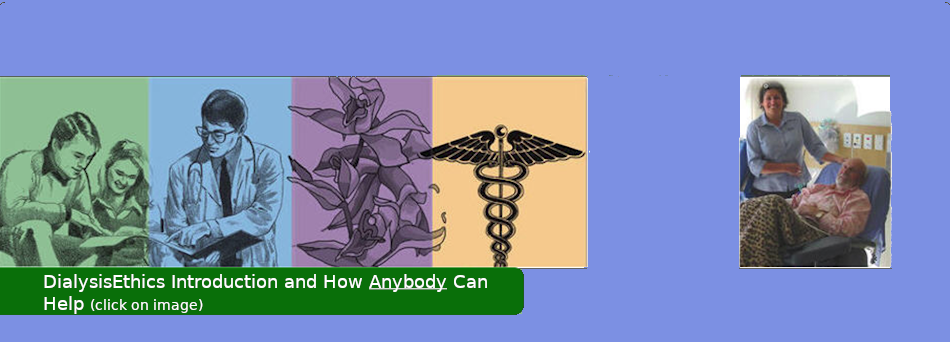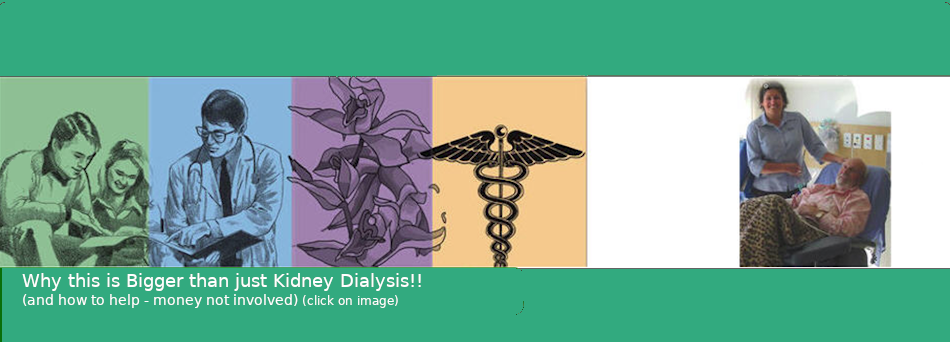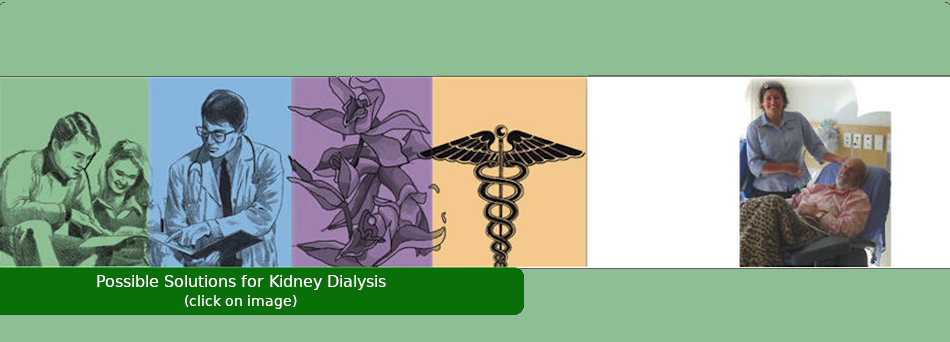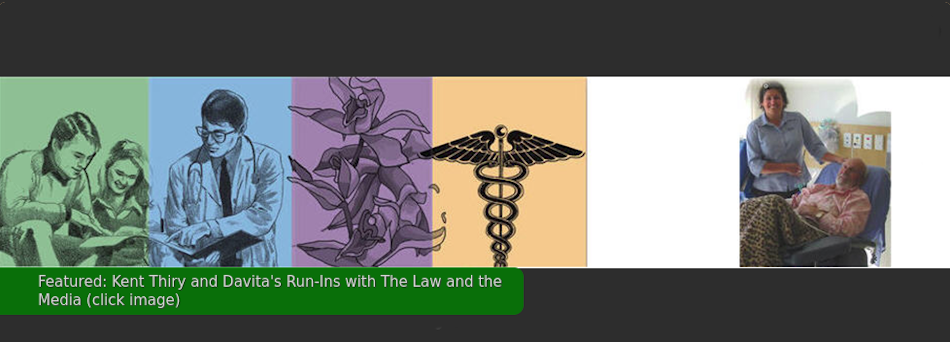Blog #35 3rd Annual Trip to the "Woodstock of MONOPOLISTIC Capitalism" (aka the little roman empire on the praire - Omaha NE) May 3rd, 2025 )
- Details
- Written by: Super User
Walk: When&Where (2nd half of webpage)
Roots of this website: Kidney Dialysis Intro:
Even KIDS haven't been spared!!!!
Petition (and see our visit to DC and DC Press Conference + Rally)
The last couple of years have been spent on an anti-Mecca pilgrimage in May, a scouting mission if you will, to where the halls of worship of the great Green God of Money have been opened up to the public - Warren Buffett's May stockholders' meetings. Peashooters have been brought along on these trips, with the hope that one day that Mr. Buffett or those around him will catch one in the eye. With May 2025 coming up, another trip is being planned. (see bottom half of page - peashooters linked to)
Flights of fantasy? Tongue-in-Cheek humor? Or just weird Dad humor have been used to convey what has been going on in kidney dialysis over the decades: The Ghost of Charlie Munger. For those who prefer more professional humor, comedian John Oliver's skit from some years ago might provide a quick jab to the eye. And for those who want a deeper dive, NYT's best-selling author Tom Mueller came out with the book 'How to Make a Killing' fairly recently, what could be considered a haymaker punch! And for a flurry of punches that have been applied over the years, a reader might start with the facts. And then proceed to the scandals.
This naive waif once-upon-a-time thought Warren Buffett, a major shareholder of the for-profit dialysis company Davita must surely have fallen victim to an oversight when he inspected the product quality of Davita. (product quality, boy is that an understatement!). But then this waif was made aware by Tom Mueller that this may not have been a oversight, but a pattern of investing where having monopoly power is favored over product excellence. Mr. Mueller also opened my eyes to the broader world of monopoly corporate power abuse by introducing this misguided one to such writers as Matt Stoller: author of the book Goliath, David Dayen: author of Monopolized, and David Sirota: author of 'Hostile Takeover' - plus others. This helped inspire the first 'SaveTheBillionairesOrNot Walk' in Omaha in 2023. The 2nd Walk in 2024 was much like the first, but I would add I did have a nice conversation with a cop watching over the meeting area and the crowd going by. And also a doctor who was renting out a clinic space to DaVita. If nothing else, some awareness was raised and I got to meet some nice people.
After initially being freaked out the first year and having a family who seemed quite concerned about me, I'm actually looking forward to another Omaha trip this year. My family seems to have accepted this is what I do this time of year. As I'm fond of saying, some people going hunting, some go fishing, some go golfing - I go and try to annoy the hell out of a billionaire, a billionaire who has stuck his fingers into something that is more infrastructure, a public service - where choice hasn't been part of the equation.
P.S. As a bonus, a short article called 'Roads to Redemption' is being linked to. Is this just the product of a fevered imagination - or what could be waiting for Mr. Buffett after finishing walking the plank! A plank called life is what we all walk in this reality before we all wind up in the drink. I imagine at 94, Mr. Buffett is seeing that plank getting narrower and narrower.
Roots of this website: Kidney Dialysis Intro:
Blog #34 Privatize the Post Office? Couldn't be Wall Street is just seeing a Big Pile of Money they Want (whoever heard of that)
- Details
- Written by: Super User
Roots of this website: Kidney Dialysis Intro:
Even KIDS haven't been spared!!!!
Petition (and see our visit to DC and DC Press Conference + Rally)
As recently as December 2024 Trump was quoted as saying privatizing the USPS is “not the worst idea I’ve ever heard.” This from a CNN article titled: "The US Postal Service is more efficient than you think. Privatizing it could cause problems for many". It may not be the worst idea Trump ever heard, but it just might be about the worst idea many of us have heard of. As the article pointed out, it is a Public Service - not a choice many can do without. Think of how many get their prescription drugs by mail, and how many get their mail-in ballots, packages etc... delivered by the USPS. Either because of location or disability they would have a hard time traveling to get what they require. This isn't a luxury for many.
As Brian Renfroe, president of the National Association of Letter Carriers, told CNN. “The destruction of any part of the public service we provide is going to have one bottom line result for the customers, it’s going to cost more and take longer to get there.”
The CNN article did present the other side and a report did claim: “a private operation would be incentivized to innovate and improve services to Americans in every community,” (however) it seemed to signal that the current requirement for universal service to every American address could be lost.
And when have the above report's words been muttered before? Words claiming privatization would "incentivize", spur "innovation", and of course "improve services"? Oh yes, during Reagan's years as president. One famous quote of his might need some updating. The quote: "The nine most terrifying words in the English language are: I'm from the Government, and I'm here to help"" ought to be changed to "The nine most terrifying words in the English language are: "I'm a Government contractor, and I'm here to help"".
Other Public Services that could Predict the Post Office's future Outcome
A reader of this site might have already guessed what Government contractor could be a harbinger of things to come for the Post Office, if Wall Street gets it's way! You guessed it! For-profit kidney dialysis! And how are those mighty, mighty fine profits attained when choice is thrown out the window - and what's the cost? But first some background, kidney dialysis has been a monopolistic capitalist dream - but a patient's nightmare! The "customers" in this scheme first need this life-saving treatment - or else. And it is a rarity when they complain. This has led to assembly-line medicine where the corporate mission has been to get them in and out as fast as you can! And how to further "efficiency"? Why use the minimal amount of staff, train them as little as possible, and pay them as little as possible. Those management salaries and bonuses need boosting of course!
So what has been the cost of the above? From DC's M.I. Mother's Keeper 2023 fact sheet:
"The per capita costs of dialysis in the US is the highest in the
industrialized world (about $35 billion per year), yet the survival rate among US patients is
the lowest. Dialysis patients in Canada, Germany and France live 2-3x longer than in the US.
In Japan, they live 3-4x longer."
The 2nd example of privatization gone amuck came to mind after this writer recalled being given a chance to be part of the National Security Agency (NSA). And I then recalled the NSA's ThinThread - Trailblazer scandal. The gist of it is NSA government employees came up with an in-house solution to data collection for $3.2 million - NSA management pushed a solution from outside contractors called Trailblazer that didn't work - and had cost overruns that totaled into the billions! More: could 911 been prevented? On 60 Minutes.
It can be hard to tell the difference between Big Business and Big Government anymore - the dividing line seems to be gone. A revolving door has people in government one minute, then big business the next. We've seen it in kidney dialysis. Add on top of it generals who are rewarded for the size of their projects, rather than results - then elites wonder why we average Joes and Janes are ticked off.
Roots of this website: Kidney Dialysis Intro:
Even KIDS haven't been spared!!!!
Petition (and see our visit to DC and DC Press Conference + Rally)
Blog #33 MAGA Outreach - We Only disagree on The Remedy
- Details
- Written by: Super User
Roots of this website: Kidney Dialysis Intro:
Even KIDS haven't been spared!!!!
Petition (and see our visit to DC and DC Press Conference + Rally)
After reading this article, it helped me understand the MAGA mind more. One statement that stuck out was: "Youngstown (Ohio) is remarkable for the consensus between people of opposing views about the underlying problems and the frustrations that stem from them. They disagree only on the remedy.". The citizens of Youngstown have been living in one of the most depressed cities in the US and politicians of both stripes have let them down. The impression seems to be the Democrats will lie to your face, but the Republicans will screw you over straight to your face - many Ohioans seem to prefer the honest crook! The alleged honest crook, Trump, whose "success was a symptom of the Democrats’ failure to address the catastrophic impact of international trade agreements on manufacturing jobs in the US – a failure he (Trump) pins on Bill Clinton and Barack Obama – and its further failure, under Obama, to take any meaningful action against Wall Street or the big banks after the housing collapse of 2007-08 (which Bush Jr. caused). I'm understanding the reasoning of the Trump voter, there is the saying "It takes a thief to catch a thief" and there is the fact Trump was looking rough on the campaign trail. Possibly he is starting to feel the limits of his mortality! Maybe he would want to hedge his bets and actually do some good before he leaves this earth! Where would be a good place to start? How about healthcare!
As of this writing though, we are still waiting for things like his "concepts" of a healthcare plan to come to fruition, something we waited for during his first term. Something he and his people could have been working on during Joe Biden's term. Something that looks on a bad trajectory right now with Trump in his usual 'Weapon of Mass Distraction' mode with his plan to make Canada our 51st state (and here MAGA voters thought they were voting to bring down inflation and healthcare costs). Trump's statement at the end of January 2025 concerning Canada: "They’d have much better health coverage. I think the people of Canada would like it,” this isn't exactly inspiring confidence. The people of Canada just might need some convincing about how much better off they would be under our wing: healthcare poll, opinion of two physicians who have practiced in the US and Canada.
But before we give up, there are rays of hope that better angels maybe at work - even in the Trump administration! There are signs that healthcare private equity investors might be facing some disappointment. JD Vance, yes the fellow who declared war on cat ladies, has been known to find common ground with Biden's FTC chair Lina Khan - only the best monopoly fighter chair since the New Deal! And yes, even Senators Josh Hawley and Marco Rubio (current Secretary of State) have been to known to make anti-trust noises! From an article about anti-monopoly author Matt Stoller (book-Goliath):
That conservatism has to figure out how to embrace a kind of post-Trump populism that uses political power to build a capitalism that, as Rubio puts it, “promotes the common good, as opposed to one that prioritizes Wall Street and Beijing.”.
Many of the MAGA voters in the article at the beginning of this blog are people who would bump heads with MAGA true believers. They were people who worried "about the cost of living and taking care of friends they’ve loved for decades and what it means to be working class in an era that has either outsourced or mechanised the work they used to do." The non-ideologue Trump voters have felt abandoned by a political class that has seemed more intent on pleasing their big-money donors. The wisdom of voting for the same sort of people who got us into this mess decades ago could be argued. But some might point out a mercurial leader - who might be facing his maker sooner rather than later - could start thinking about what is in store for him in the Great Beyond. It might be a wild card, but looks like something people have put their money and vote on.
A Start? Kidney Dialysis, High Mortality for High Prices - Unique in Medicine for a Rising Mortality Rate
So where could Trump start looking for a "Road to Redemption" in healthcare - just in case death isn't just an eternal dirt nap. Trump is a fellow who doesn't seem to mind bumping heads with just about anybody. Who knows? He might turn his gaze towards a very rich DINO. This Democrat-In-Name-Only has managed to avoid the public eye recently - and avoid the fur flying about. Once upon a time this writer thought the aforementioned DINO was a benevolent teddy bear who only wanted to do good in the world - while making himself very, very rich! Turns out this teddy bear investor is a monopolistic capitalist with little regard for "product quality" to put it mildly - to the point of allowing unnecessary deaths! Yes, this DINO is none other than Warren Buffett - someone called America's 'Folksiest Predator'. Do you have this feeling in you dear reader, a feeling similar to finding out Santa Claus isn't real? This is the same feeling this 20+ year kidney dialysis advocate experienced when finding out who was at the top of the garbage heap that is for-profit kidney dialysis (numbers - scandals). After years of trying to make Mr. Buffett aware of what is going on with one of his investments it looks like not much has changed.
So let's say Trump did decide to go after an evil that has been allowed to fester for decades (and bump heads with a DINO), how could he proceed? Below is a roadmap:
*Encourage the formation of 'Community Dialysis Houses', there is already at least one prototype right here in the U.S. that has been running since 2009! Kidney dialysis patients in rural areas often times have to drive many miles to receive care in clinics in more urban areas (rural areas, often times Trump strongholds). Even in urban areas there are patients who would like to do more self-care, but aren't finding it in their clinics - and are unable to setup home dialysis in their homes.
*Update Feb. 7th, 2025: It was pointed out on a Common Defense Signal Channel I and others post on, that I'm dreaming a little big with this blog. It made me realize I ought to mention if I were to take a first step, the 'Community Dialysis Houses' above might be a good place. Possibly my federal rep (Jason Crow) could take an interest in this? It could be a rural outreach for him! P.S. I mentioned the Common Defense organization I'm a new member of. It is nationwide and veteran-led. While I'm at it, I'm also a new member of a more local organization Colorado Rapid Response Network. I just recently got to show up at a live ICE raid with CRRN (a story for another day).
*Revive the Lina Khan's FTC effort to ban noncompete contracts - it would have affected kidney dialysis by allowing the doctors to leave less than stellar clinics and go to clinics more in line with their values for one thing. More on that and a latter article on the status of the noncompete ban. (as mentioned Lina Khan has often times found common ground with Vance, Hawley, and Rubio)
*Get rid of the exemption the nephrologists, kidney doctors, have to the Stark Law - a law that says doctors aren't allowed to profit off their patients. Doctors will often times have a financial stake in these dialysis clinics. Guess where doctors will often refer their patients, not the best clinic, but the one where they have a financial interest! A restaurant example helped me understand this.
*Warren Buffett could divest from his stake in the huge for-profit dialysis company DaVita: a quick, humorous intro to DaVita by the comedian John Oliver - and a deeper dive by NYT's best-selling author Tom Mueller, book 'How To Make a Killing'. Plus a Bonus: the SCANDALS!!!
*THE BIG ASK: bust up the huge for-profit dialysis companies like DaVita and Fresenius into a bunch of manageable itty-bitty pieces - right now they are stock market driven near-monopoly companies more beholden to upper-management bonuses, and the whims of their biggest shareholders than the needs of their patients. These companies provide their own oversight for the most part. This is a classic case of the fox watching the hen house. Choice and competition are two main factors that make capitalism work. THESE TWO FACTORS ARE SEVERELY LACKING IN KIDNEY DIALYSIS. These companies could be busted up into something like small care-coops where staff and patients could do the hiring and firing of management!
In conclusion, if Trump and DOGE are serious about saving money - while also saving lives - they ought to take a hard look at kidney dialysis!
Roots of this website: Kidney Dialysis Intro:
Even KIDS haven't been spared!!!!
Petition (and see our visit to DC and DC Press Conference + Rally)
For a Deeper Dive
Reading List
(includes NYT's best-selling author Tom Mueller's book 'How to Make a Killing' about kidney dialysis)
Blog #32 Michael Moore: Genocide Arms Dealers (our Senate)
- Details
- Written by: Super User
(Roots of this website: Kidney Dialysis Intro:
Even KIDS haven't been spared!!!!
Petition (and see our visit to DC and DC Press Conference + Rally))
But Back to the Michael Moore article:
These Democratic and Independent Senators Voted to Send More Weapons to Israel to Kill Civilians in Gaza.
Michael Moore
Nov 30, 2024

What better way to celebrate losing the November 5th election than by continuing to ignore the will of the American people who oppose Israel’s war on Gaza. Nothing says to the public “we hear you” better than the Democratic Party announcing that “we’re going to kill even more children in Palestine now with your/our American tax dollars.”
And what better way to celebrate the current holiday season — including the one where we feast and remember how the Indigenous people of the Americas saved our lives by feeding us a meal right in the middle of our European ancestors committing the largest mass genocide in human history… AND the upcoming celebration of the birth of the Prince of PEACE, plus the celebration of the Maccabees killing the Syrians who had stolen their land and their Temple with Hanukkah, the “Festival of Lights and thanksgiving,” commemorating the rededication and reopening of the Temple.
But something amazing happened exactly 10 days ago: 19 Democratic and Independent Senators stood up for the first time and voted to STOP the sending of three shipments of American weapons to Israel. It was a never-before rebuke to warn Netanyahu that millions of Americans have had enough of his slaughter of innocent civilians. Of course, to Netanyahu, Palestinians are not “innocent” because, well, they don’t exist. The 1977 manifesto/ charter of his Likud Party makes this very clear:
“Between the Sea and the Jordan there will only be Israeli sovereignty.”
In other words, “From the River to the Sea,” just driving the other way. He intends to remove these non-existent humans from Israel’s occupied territories and push them into the deserts of Egypt and Jordan — and, as we currently witness every day, to exterminate them, preferably when they are infants and children. Saves the trouble of having to do it later. Ask the Germans and the American pioneers. They were both convinced that annihilation was the answer — the Solution — to removing “the problem.”
Please keep in mind that the polls show most Americans these days do not support this war. And I believe that most Americans still believe the following:
1. Ethnic cleansing Is a War Crime.
2. Apartheid Is a Racist System that is a Crime Against Humanity.
3. A Theocracy Is Never a Democracy. Not in Iran. Not in an America run by the Moral Majority or Christian Nationalists. Not in an Israel that has sadly lost its way.
Please take a moment on this special holiday weekend to let your elected representatives know you do not want your tax dollars going to a right-wing government that is hell-bent on civilian mass starvation and death.
Democratic senators should know better. And their behavior in supporting this aggression will only cost them more elections. Voters under 45 and people of color combined (making up nearly half the electorate), have no interest in war and would rather our government spend our money on our schools, our elderly, and our broken health care system. Time to cut Bibi off.
Speaking of a broken health care system: Murder closer to Home (below)
Kidney Dialysis: Even KIDS haven't been spared!!!!
Petition (and see our visit to DC and DC Press Conference + Rally)
- Blog #31 Colorado's Federal Representative Jason Crow addresses the Blatant Misinformation spread by Trump about the CO city of Aurora's Gang Problem
- Blog #30 Senator Elizabeth Warren: Here's the Plan to Fight Back
- Blog #29 The Democratic Party Must Decide: Which Side Is It On? By Bernie Sanders November 10, 2024
- Blog #28 Broadening out of a writer's Civic Duty: The Blue Wave vs The Red Storm
Page 2 of 14













